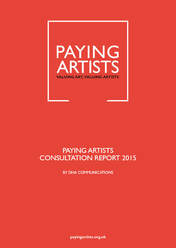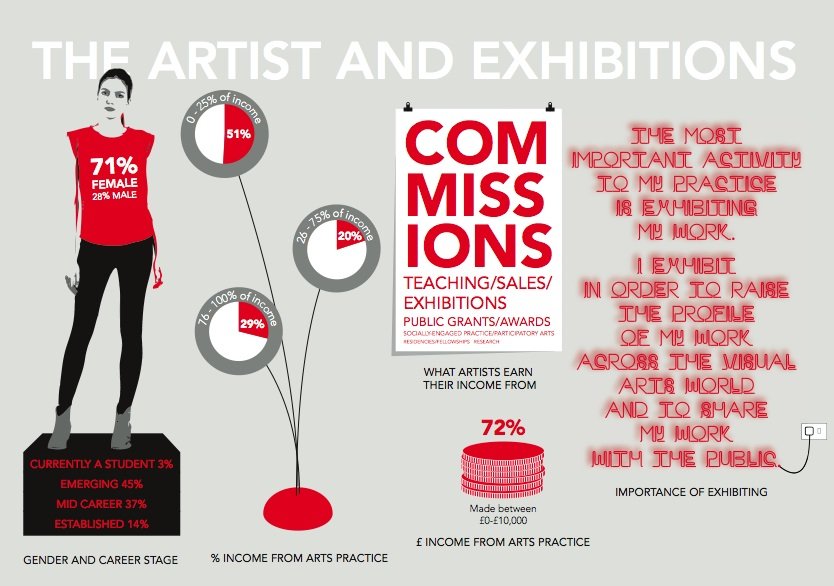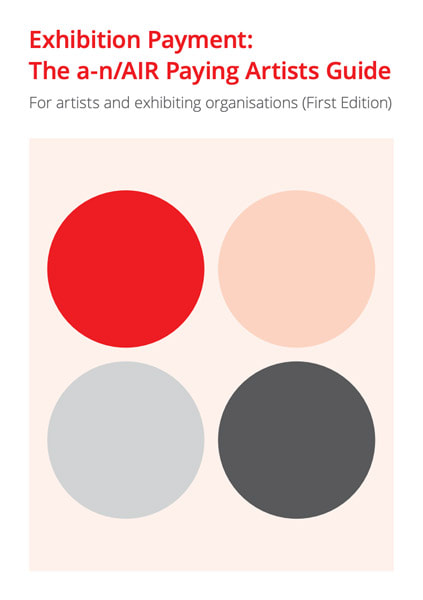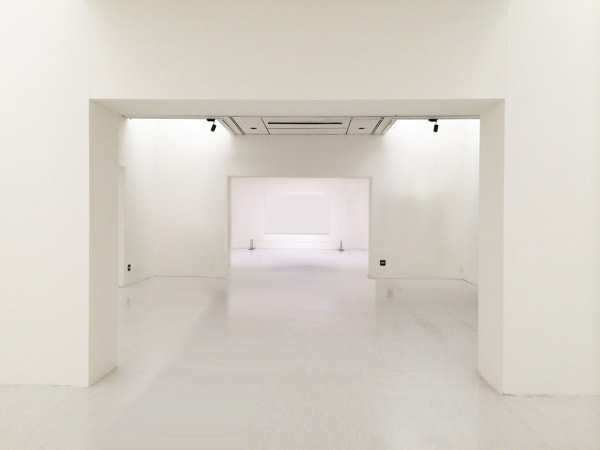- Home
- NEWS
-
PRACTICE
-
MARKETING
- How to write an Artist's Statement >
- How to write an Artist's Resume or CV >
- How to sign a painting, drawing or fine art print
- Business Cards for Artists
- How to write a press release for an artist
- The Private View Invitation
- Publicity for Juried Exhibitions
- Websites for Artists >
- Image & Video sizes for Social Media Sites
- How to be mobile-friendly
-
SELL ART
- FRAME ART
-
SHIP ART
-
COPYRIGHT
-
MONEY & TAX
- About + Help
- BANKING
|
The aim of this page is to provide artists with links to resources about payments to artists covering:
This is a developing section. You are invited to contribute links to any additional resources you are aware of - anywhere in the world. PLEASE complete the form at the bottom. |
This section covers:
|
How much do you pay yourself - as an artist?
|
This is a formula for working out how much NET PAY you generate for every painting you sell. It's linked to How to Price your Art.
|
REFERENCE:
|
How to work out your average annual income and net pay per painting
|
Calculate
INCOME net of sales costs |
Identify the following:
|
|
Calculate
INCOME net of variable costs |
deduct the costs of making the artwork.
|
|
Calculate
GROSS INCOME before tax and deductions and tax allowances |
This is the sum available for your wages and payment of your fixed costs of making art (eg studio, insurance)
|
|
Add back
All ALLOWABLE EXPENSEs |
These are expenses where:
|
|
GROSS HOURLY INCOME before tax and deductions
|
Dividing this figure by the number of hours you work on your art (creating and all other related jobs) generates your gross hourly wage for that artwork.
|
|
NET INCOME
which you get to to spend! |
Now we need to work out much net income you 'take home'
|
Frightening isn't it? Try also reading The art income shock by Robert Genn.
Do remember
Do remember
- to keep all you receipts and to claim all expenses allowed by your tax system.
- every country's tax system is unique and what applies in one place might not count in another.
ADVERT
Paying Artists in the UK
We are committed to making sure those who work in arts and culture are properly and fairly paid.
Arts Council England
|
The main organisations in the UK which have taken the lead on the topic of paying artists are:
Issues which have been addressed recently are:
The personal stories tell of unpaid hours; unsustainable workloads; limited prospects for progression; poor pension provision; exploitation – and self-exploitation; undervalued qualifications; volunteers taking formerly paid positions; the need for financial support from family members; second jobs in other sectors; huge differentials between senior and junior staff; freelance rates that have been stagnant for a decade; and experienced and highly qualified workers leaving the sector altogether in order to be able to pay the rent. |
REFERENCE:
a-n The Artists Information Company
These Typical Rates of Pay are provided for guidance purposes; artists are at all times free to negotiate rates of pay different to those set out above. Rates assume appropriate professional conduct by the artist themselves. Arts Council England
The mean average total income for artists across the UK in 2015 was £16,500. Further, the average income derived from art practice in 2015 was £6,020. Income from art practice therefore represents 36% of total income. However, two-thirds of artists earned less than £5,000 from their art practice. Arts Professional
Scottish Artists Union
Represents over 1200 visual artists, applied artists and makers Some typical rates of pay which members may wish to use as a guide when negotiating payment for their work on short - term contracts, sessional work and residencies that are paid on a self-employed status basis. Day rates are based on an 8-hour day, minimum ‘call’ is for a 4-hour session. Rates of Pay should apply to a wide range of freelance and short contract employment from consultancy work, project planning and development, to all aspects of workshop delivery (set up, execution, clear up) and other freelance activity. Rates exclude artist’s expenses for a specific project and VAT where relevant. |
In addition, there are various commercial websites which provide data on average SALARIES for different occupations - in different countries. Typically these relate to artists in employment ONLY (i.e. they do not include earnings for self-employed income). Applied art - involving CGI seems to pay better than graphic design and much better than fine art.
Here are a few examples
Here are a few examples
Exhibition Payments in the UK and Ireland
|
Paying Artists (the organisation)
.....is about payment for artists who exhibit in publicly-funded galleries Paying Artists is an initiative established by the artist membership organisation a-n, and its advisory council, AIR, to help build a clearer relationship between artists and galleries and provide the basis for paying artists who exhibit in publicly funded spaces.
In 2018, a-n launched the Exhibition Payment Survey 2018, a new sector-wide survey to collect essential data and produce a benchmark for Exhibition Payment.
|
REFERENCE (Paying Artists publications)
|
Key findings in relation to exhibiting include:
– 71% of artists surveyed had not received any fee at all for exhibiting. Of those who were paid a fee, over a third received less than £200. Over half expressed dissatisfaction with their fee when set against their experience and status
– 63% of artists have turned down an offer to exhibit for reasons including unsuitability of venue, lack of fees, or non-payment of expenses
– 62% of artists have exhibited in a publicly-subsidised gallery in the last three years
– Only 16 of 134 publicly-funded UK galleries were cited by artists as providing exemplary support for exhibiting artists
– Less than half received production support (technical assistance, etc) from the gallery and less than a third got expenses, such as covering the cost of transporting their work to a gallery
What is an exhibition payment?
Exhibition Payment is…
… a payment to artists which values their singular imagination and professional contribution to the success of publicly-funded exhibitions. It is a flexible, fair approach that upholds equality and diversity in the arts. It contributes to embedding best practice in arts organisations when working with artists, to sustaining artists’ careers and to ensuring audiences see art that represents the full spectrum of our human experience.
It is not…
…about paying artists to install the artworks to be exhibited, or a replacement for day rate fees normally paid to artists (for example as part of a commission, public talks, residencies, engaged or participatory arts practices, workshops, community projects or gallery education and learning programmes). It is not about covering basic programming or organisational costs that should be budgeted for by the organisation, or the purchase of art works or copyrights from the artist. Exhibition Payment is not about stopping artists working for nothing when they choose (and can afford) to do so, or imposing straitjackets on exhibition spaces.
- Exhibition Payment: The a-n/AIR Paying Artists Guide For artists and exhibiting organisations (First Edition) - see below
|
PAYING ARTISTS RESOURCES: Quick Guides
REFERENCE:
|
|
Paying Artists in Ireland - Work and Exhibitions
|
REFERENCE
|
ADVERT
Paying Artists in North America
|
Prior to 2009, a study in Canada identified that the average visual artist
Some reasons this might be the case:
|
REFERENCE:
CARFAC (Canadian Artists’ Representation/Le Front des artistes canadiens)
WAGE (Working Artists and the Greater Economy)
|
Working in Art Galleries and Museums
Low pay is widely recognised as a major problem for the sector. Museum pay is falling behind that of comparable sectors, and is barely keeping up with the cost of living.
Museums Association
|
If you're an artist working in an art gallery or museum you are NOT being paid as an artist per se. You're being paid for the job of work you do.
You may be anything from a receptionist at the front desk to a professional conservator. Pay is aligned to the knowledge and skills you bring and the expertise required of the individual doing the job of work. |
Museums in the UK
Museums in North America
|
ADVERT
ABOUT ART BUSINESS INFO. FOR ARTISTS
This website aims to provide a compendium of resources about the art business for artists. Please read "PLEASE NOTE"
It helps artists learn how to do better at being business-like, marketing and selling their art and looking after their financial security.
This website aims to provide a compendium of resources about the art business for artists. Please read "PLEASE NOTE"
It helps artists learn how to do better at being business-like, marketing and selling their art and looking after their financial security.
|
Copyright: 2015-2021 Katherine Tyrrell | Making A Mark Publications
- all rights reserved If you've got any suggestions for what you'd like to see on this website please send me your suggestion
|
PLEASE NOTE:
1) Content and the law change all the time. It's impossible to keep up with it if you're not working on the topic full time. 2) I research topics carefully. However, I am totally unable to warrant that ANY and/or ALL information is
|
3) Hence all information I provide comes without any LIABILITY whatsoever to you for any choices you make.
4) This website is FREE FOR YOU but not for me. Links to books are Amazon Affiliate links. Buying a book via this website means I get a very small payment which helps to fund and maintain this website. .I much appreciate any support your provide. Adverts are provided by Google AdSense - but the adverts do not mean I endorse the advertiser. |
- Home
- NEWS
-
PRACTICE
-
MARKETING
- How to write an Artist's Statement >
- How to write an Artist's Resume or CV >
- How to sign a painting, drawing or fine art print
- Business Cards for Artists
- How to write a press release for an artist
- The Private View Invitation
- Publicity for Juried Exhibitions
- Websites for Artists >
- Image & Video sizes for Social Media Sites
- How to be mobile-friendly
-
SELL ART
- FRAME ART
-
SHIP ART
-
COPYRIGHT
-
MONEY & TAX
- About + Help
- BANKING



